I remember the first time I saw rocks exploding; it was on a family trip when we camped in camp Liza, Slovenia. The scenery was terrific, and I recommend for each one of you to pay a visit. Although, we did make a big mistake back then. When we built our campfire, we used rocks which were laying next to the nearby river. At first it seemed like a natural decision; however, these rocks are prone to blast – I will elaborate that in specific later on in this article. Let’s dive into it and figure out how to avoid exploding campfire rocks once and for all.
![]()
To avoid exploding rocks in your campfire, you should use hard stones which do not contain air pockets or water molecules inside them; granite, marble, and slate would be the best choice. On the other hand, avoid sandstones or smooth rocks which, accordingly, feature air and moisture in the inner parts.
Later on, I will discuss the logic behind it and show you exactly how to recognize the right rocks which could hold the extreme heat conditions.
What Are Exploding Campfire Rocks?
Whenever you build yourself a campfire for cooking, or perhaps to warm up a little, you have to use some rocks to prevent the fire from spreading.
Although, in several particular cases, you are going to find several stones which have been cracked due to the high temperatures – these are named ‘Exploding campfire rocks.’
There are many reasons for the phenomenon; however, the basic concept is when the pressure inside the rock gets too high, so it isn’t able to maintain its form.
When an explosion occurs, the stones will still be able to block the fire from spreading, although the process itself could be dangerous if you are sitting nearby.
Later on, I will offer you some ways to protect yourself from that and show you some clever solutions if you are not sure whether or not the rock can handle the heat.
What Makes Campfire Rocks Explode?
As I’ve mentioned, rocks tend to explode when the pressure inside is too high for the stone to handle. That may occur when the type of stone is not suitable for high temperatures, or when there is moisture inside it.
The Type of The Rock
The first type of rocks which might be problematic is the layered one – as sandstones feature. If the whole structure of the stone isn’t unified, pressure built inside could quickly push the different layers apart.
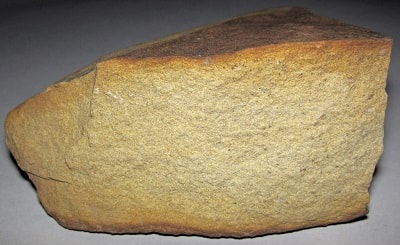
An explosion may also happen when the rock is too smooth – allow me to explain why. The process which flattens rocks is a long one and usually involves water which gradually carves the rough surface (that’s what often happens to stones next to lakes and seas).
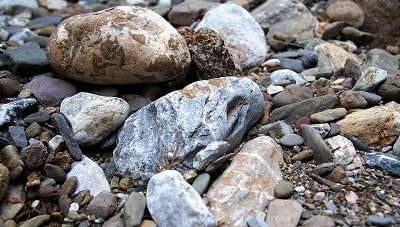
The bad news is that these stones usually feature little pores which cannot be seen with the human eye. As water pass on their surface, some molecules get inside these pores over time.
Later on, I will discuss the reasons why inside moisture would explode rocks in general, however, here I will say the smooth rocks almost always wet inside, and you should avoid them when building a campfire.
The last type of stones which may be prone to explosions is the permeable one, which also comes along with soft and light rock. A great example of this kind is limestones and pumice which are made of skeletal fragments of marine organisms and volcanic materials accordingly.
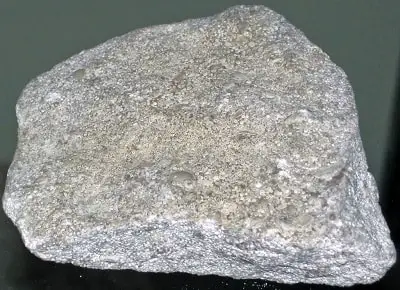
These are bad for a campfire since the air inside them and once they heat – the volume expands, and the inner pressure would pop up the stone.
The Moisture Inside The Rock
As said, smooth rocks most commonly contain water molecules inside them that evaporate, expand and eventually explode the stone. However, inside moisture may also be the case in rough ones which had been exposed to water for an extended period.
If you happen to camp next to water sources, such as lakes or rivers (which feature a consistent water stream) – avoid using the rocks nearby even if they aren’t smooth.
How to Avoid The Issue?
To avoid exploding campfire rocks, you should stick to hard ones such as granite, marble, and slate when building a campfire (besides skipping stones which are prone to this, such as sandstones or limestones).
Allow me to elaborate on the favorable types and explain to you what makes them so suitable for building a campfire.
Go With Granite
What special about granite rocks is that they are considered ‘igneous,’ which means they were formed from molten magma. In the formation process, the burning magma cools down and turns slowly into solid stone.
While made of different minerals, granite rocks are quite dense and resistant to water; therefore we eliminate the inside moisture issue.
The color of these stones mainly determined by the crystal they contain, in our case mostly quartz. Hence, the most common colors for them would be white, light gray, yellowish or pink tones. Also, the stone’s surface is usually coarse and hard – it would be almost impossible to scratch it with your pocket knife.
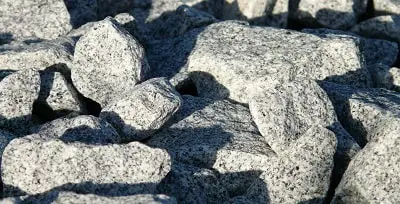
You Can Also Use Marble & Slate
Marble and slate stones are considered metamorphic rocks, which means they were formed from an existing rock which had gone structural changes. When undergoing metamorphism, limestones and shale turn into marble and slate accordingly.
It could be that the previous form was preamble, lightweight and contained a lot of air pocket which wouldn’t do good when put into your campfire. Nevertheless, when facing enough heat (greater than 150 to 200 °C) and pressure, the new solid form may do just fine.
In general, marble usually features white shades and subtle coloring when having flaws. Many times, the marble stone’s surface is smooth, although in opposed to pebbles they do not contain water from the inside.
To identify marble stones, you should look for their veins which are presented in many cases and indicate that other materials mixed with the original rock.
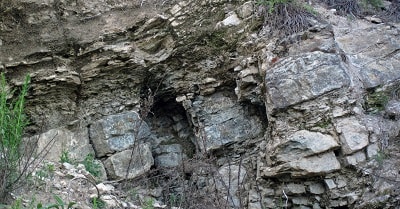
Like marble, the slate colors are also determined by the minerals the rock contains and usually range around different shades of grey. Slate stones are made of made up of parallel foliated plates and therefore break evenly along its cleavage.
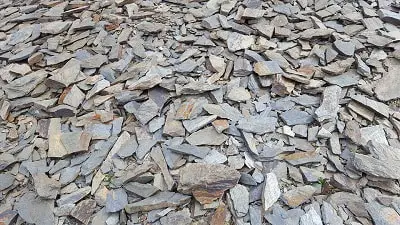
What if I’m Not Sure About The Rock?
It’s easy to say what rocks are ideal for campfires and what to avoid, however, many times they are hard to distinguish and we are not sure if they will get the job done. The classic scenario is when you arrive in your campsite around sunset and can barely see your surroundings.
If you are not sure if the rock you’ve chosen will explode or not – place it on the ground and put your firewood in a way it will cover it from above.
This way, if you made, a bad choice and the stone exploded – you can be sure that the logs weight would block it from jumping out on you. You shouldn’t underestimate that particular phenomenon since a hot rock could reach over 1,100 degrees Celsius.
Another suggestion is sitting far away from your bonfire – perhaps several feet away. If you are camping on plane areas with a little risk for a spreading fire – you could build it in a way there are no rocks at all in front of you; place them merely on the back instead.
Are There Alternatives For Rocks When Building a Campfire?
In fact, when building a campfire, in some cases you don’t have to use any rocks at all. If you are camping on mineral soil, for example, there are little chances the fire will go wild.
Nevertheless, you should make sure there aren’t any inflammable materials nearby and that the wind is on your favor. Also, you can build a circle soil wall to block the fire – as long as it is tall enough, things should be fine.
Also, you could try making the Dakota Fire Hole; it requires you to dig a pit and place your firewood in it. The hole will also decrease air consumption and allow your fire to keep going an extended period.
Should I be Careful to Use Only Dry Rocks With Campfires?
Frankly, permeable rocks which contain little air pockets feature a higher risk in exploding than wet ones. The reason for that is that air expands more quickly than water molecules and usually occupies a greater volume within the rocks.
Still, don’t hesitate using rocks that got wet due to pouring rain – the process of water penetration is much longer than that.
That is also the case for stones which are located in damp areas – water usually evaporates from them before it has the chance to get in. If you still feel uncertain – feel free to use the soil itself as a blocking wall (as I’ve described above).
Another issue is damp firewood, which, in opposed to rocks – could make a fire going difficult. If you are facing that issue, I highly suggest that you read my article which explains how to light wet firewood.
I‘ve also written a whole different one who shows to how to keep a fire going in the rain – do not miss reading those if you are camping in wet conditions.
What to do if The Ground is Frozen?
From what I said earlier, it is easy to assume that building a campfire on frozen ground is a bad choice since when water evaporates they tend to expand and perhaps cause a rock explosion.
Still, from my perspective, you shouldn’t worry about that too much. If you think about that, the actual ice within the ground isn’t inside rocks.
Instead, it is usually formed by frozen water which seeped into the soil and became ice due to the low temperatures.
When the fire is on, and the heat elevates, these water could easily evaporate – they are not trapped from the sides and raise the pressure.
The exploding phenomenon relies on force and if there isn’t any of it – it won’t happen. On the other hand, if you are camping next to a frozen lake and use the rocks nearby – they could have some ice trapped inside and explode when you light your firewood.
Are Fires in Natural Caves Safe?
Let’s say that you decided to drop the ‘campfire with rocks’ idea and found a great opportunity in making a fire inside a natural cave.
The apparent advantage in doing so is that caves won’t allow the flame to spread – the ground itself is made out of stone. On the other hand, building a campfire inside them is prone to some dangers.
First, there is no ventilation in caves, and the smoke has nowhere to evaporate. Besides suffocation and discomfort, that smoke could wake up creatures inside – such as bats and spiders.
Flying bats aren’t a big issue and would probably merely scare you, although when they evacuate the cave, they have a low chance of survival. Spiders, on the other hand, could harm you if you are unlucky and facing dangerous species.
When you camp in caves, I suggest that you build a fire outside its opening and put a reflector behind it – this way you make enjoy the heat while the smoke wouldn’t cause any issues.
In fact, using a reflector will allow your campfire to burn longer since it blocks the wind which hastes firewood consumption.
On that matter, I’ve written an excellent article which explains how to make a campfire burn all night – I spent hours to provide you with the most accurate and useful techniques.
How to Deal With a Hot Rock Burn?
As I’ve mentioned, exploding campfire rocks could be dangerous if they happen to land on exposed skin. If that happens, the first step you have to take is cooling the hurting area as fast as possible.
For instance, you may do it by pouring some cold water on it – although please make sure they are not too cold – that could cause hypothermia.
The second step I suggest you take is putting the fire out; if a rock had exploded, there is a good chance a second one is on its way.
On the other hand, if you wish to keep the fire going – make sure that you take some steps back and maintain a little distance from it. If you happen to have a first aid kit with you – use it, and make sure that you disinfect the area properly.
Anyhow, when a burn occurs, I suggest that you sick some medical assistance as fast as possible and make sure that the wound is kept clean until then.
Conclusions
Exploding rocks is a common phenomenon when camping which mainly happens when using the wrong type of stones.
To avoid the issue, you have to ditch the soft ones, like sandstones – these usually contain air pockets which expand and elevate the inner pressure.
Also, avoid using smooth rocks found next to water sources – these typically feature water molecules inside which evaporates and again cause the same issue.
When picking up the stones for your campfire circle, stick to granite, marble, and slate – these are firm and would hold high temperatures.
If you are not sure about the rock – you can always avoid using it – remember that a proper soil could act as an excellent alternative.
I hope that my article had delivered the goods and answered some of your questions. If you have any hesitations or new insights – let me know all about them by leaving a comment below!

